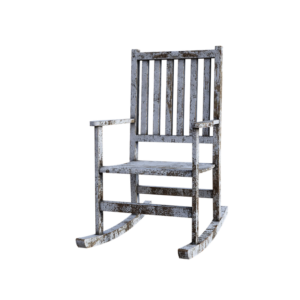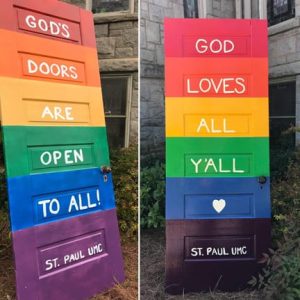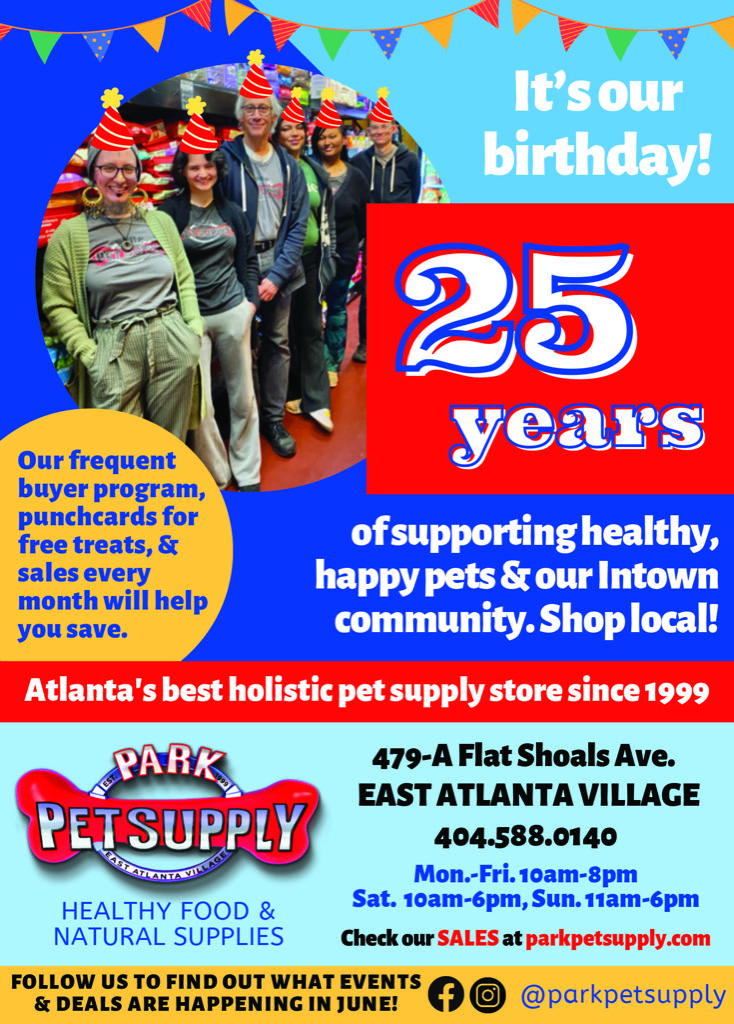By Paul and Riki Bolster
We drove slowly south on Moreland Avenue. With a fresh PhD in hand and a job teaching American History at Clark College, Riki and I, both country-raised, were starting a new life in the big city and looking for a neighborhood we could call home. We had only two requirements. The neighborhood had to be integrated and the housing had to be affordable. The rows of fast-food restaurants and beat up quick stop gas stations made a bad first impression. But the Little Realty newspaper ad had a house for rent on Ormewood Avenue for $135/month. The price was right and some of the rent could go towards buying the place if we chose to, for just $13,500.
The house was like most of the other homes. It was squat and square with two bedrooms, a bathroom for one, a living room and kitchen all packed into 1,100 square feet. The yard fronted on Ormewood Avenue, which later gave visibility to our handmade wooden 4’ x 6’ sign for George McGovern (that tells you it was 1972). It looked like a neighborhood where one could raise some kids and that was important because just the day before, we found out Riki was pregnant with our first child.
There were no newly built houses in the neighborhood. The area had been subdivided in the late 1930s and built out during the post-World War II era for working class home buyers who were prospering from the post-war boom. This wasn’t Grant Park Victorian, although there were a few Grant Park-comparable homes along Woodland Avenue which had developed along the Soldiers’ Home trolley line at the beginning of the century. But mostly simple bungalows lined the streets. (Many years later we moved to a house on Woodland Avenue which had once been the home of farmer Dooley.)
The neighborhood was racially mixed, but predominantly white. We had a black family living on one side and a white family on the other. We were introduced to both quickly. The morning after we moved into our rental house, loud music came from the black side and a loud domestic argument resulting in a black eye came from the white side. After we got to know each other, we got along fine with both neighbors. We soon noticed, however, there were not many children playing or riding bikes in the street. The explanation came from a mysterious sign resting in the window of many of the homes: “Protected by the FBI.”
No, a plethora of FBI agents didn’t live in the neighborhood. The sign meant the U. S. Department of Housing and Urban Development owned the house because the prior owners had walked away from their mortgage. This was not due to a housing recession, however. It was more of a desegregation recession. The impetus for large numbers of white families to pick up their comfortable lives and march to the suburbs wasn’t the racial integration of students at Anne E. West Elementary School and other schools in the Atlanta Public Schools system. It was the 1971 integration of the teaching staff at the schools that prompted the shameful exit of much of the middle-class professionals.
As a result, there was no significant market for the HUD/FBI homes. We bought one on Ormewood Avenue eight months later and moved into our own home. The next day our son, Nathan, was born. Dressed in my one suit, I left to teach at Clark and glanced back into the bedroom. Piles of boxes and bags surrounded the bed where Riki was still asleep next to a little lump on the bed.
Not everybody left. Most of the older generation, who had called the neighborhood home since the big build in the 1940s, remained. They no longer had kids in the Atlanta Public Schools, their churches were still here and the owner-operated businesses they had frequented all their lives were still here. You could walk to Woodland Pharmacy (now Little Azio), Childrey’s Laundry (demolished and under construction), Simpson’s Grocery (now Spoon, the vet, and the dance studio), Ormewood Presbyterian Church, Woodland Hills Baptist Church, and Holy Comforter Episcopal Church. Mr. Gregory Griggs lived on Woodland Avenue and he was chair of the Finance Committee of the Board of Alderman (not yet a City Council). Louis Arnold, who moved into his house in 1930, stayed and sold real estate – he is still here, alive and well and living on Essie Avenue. There was little traffic. You could get on the Interstate without going through a single stop light. No speed bumps.
We wanted to be part of a neighborhood and to find friends. And we wanted the neighborhood to prosper. Other young families of modest means saw the opportunities as well. Quickly we decided to organize our collective efforts. South Atlantans for Neighborhood Development (SAND) was born in 1973.
Why South Atlantans for Neighborhood Development? The organizational structure followed the pattern of the revivalists in the Little Five Points neighborhoods. They had formed B.O.N.D., the Bass Organization for Neighborhood Development, to coordinate the work of Candler Park, Inman Park, Little Five Points, and Poncey Highlands. The organizers hoped each neighborhood would get strong enough to stand on its own, and that is now largely the case. The only place where you will still find the name B.O.N.D. is in the name of the Credit Union.
So how did SAND address creating a neighborhood? What did SAND do? Not much at the start. There were only four of us in the first meeting: Charlie and Margot Arter, Riki, and I. We did get a boost from the work of prior leaders who had formed the 30th House District Town Hall meeting led by State Representative John Savage, and even recruited some of the older residents.
At first, we were a “stationery” organization, which means we created a letterhead and wrote letters. Letters to city officials, complaining about the lack of quality municipal services on the south side of I-20, then letters to state officials. One older resident, Rev. Leroy Obert (pastor at Ormewood Presbyterian Church) remarked in an editorial, “We no longer need feel we must face city hall alone, but have the help of our neighbors to let our voice be heard. We have found a little of our time goes a long way when we put it together with others.”
A few of us became engaged in and led the PTA at Anne E. West, the community elementary school, first established in 1907 as Ormewood School. In the 1970s the intimidating, stalwart figure of principal Ms. Frances McKey ruled the school and “her children” with an eagle eye. (An aside, there is a Facebook page for Alumni of Anne E. West.)
Riki shouldered the task of a little monthly, hand-delivered newsletter called the Sandpaper and we looked for opportunities to “raise sand,” as the oldsters called our activities. We held Community Flea Markets and later a Carnival in the parking lot of the Ormewood Presbyterian Church (now the Community Church) with booths and children’s games. We concocted a Kudzu Soup for another festival, and created a SAND float in one of the big July 4th parades downtown. One year SAND organized its own parade – right down Moreland Avenue on a hot Saturday afternoon, culminating in a festival in the parking lot of what was then the Moreland Shopping Center. I don’t know how we got a permit to close down the road but, a marching band, and candidates running for Governor rode down Moreland waving, and creating a predictable traffic jam. (Try doing that today!)
Ever hear of the Sandpipers? That was the adult co-ed volleyball team made up of SAND residents and a few recruited hangers-on (or ringers?) to play in the city recreation leagues. You can read about their adventures in Volume 1, Issue 8 of the Sandpaper.
At one meeting we asked for a show of hands to indicate the most important issue in the neighborhood. Turns out stray dogs running free was the number one issue. That brought on the great dog round up one Saturday morning with Fulton County Animal Control helping us in the chase. I think we managed to capture one or two stray dogs. No such thing as residents walking their dogs on leashes or a dog park.
By 1975 SAND began a cooperative campaign with the Atlanta Clean City Commission. We identified areas that needed the most help, rolled up our sleeves and attacked litter and major trash beginning with the area around what was then known as the Sunshine Shopping Center (on Moreland Avenue south of United).
Our most serious challenge, however, was the proposed East Atlanta Tollway. When neighborhood activists above I-20 blocked the building of the Stone Mountain Expressway and its interchange (now the Carter Center), state transportation planners who wanted to separate I-75 from I-85 running through the city did not give up their dream. The State formed a Tollway authority and planned I-675 to come straight through the SAND neighborhoods (1974).
There were several proposed routes. One followed what is now the Beltline and came straight through the house we first rented on Ormewood Avenue. The second followed Woodland Avenue to connect to I-20 near Jackson High School and came through my beautiful little HUD house I bought on Ormewood. In this fight we were more than just a letterhead. We had elected officials from the city on our side. Maynard Jackson had run for Mayor with solid support from neighborhoods across the city and he joined us in the stand against the roadway that would have been the end of the SAND neighborhoods.
Although housing in the Ormewood Park and Grant Park neighborhoods was inexpensive, getting a loan from the bank was a major challenge, if not impossible. Southside neighborhoods were red-lined. That led to the formation of the Grant Park-SAND Federal Credit Union in December, 1975. Much later it merged with the B.O.N.D. Credit Union in Little Five Points.
There are lots of other efforts that have shaped these neighborhoods. Not many will remember June Cofer who served us on the Board of Education and fought for a new high school to replace the old Roosevelt High (preserved and built into apartments at the top of the hill). Maynard Jackson High School now has a proud International Baccalaureate program.
Very few present residents have seen the five-year SAND development plan created by a team of Georgia Tech city planning students under the direction of Prof. Malcolm Little. The 1970s were a time of change.
So, what’s next for SAND? New sidewalks? A reconstructed Moreland Avenue? Some affordable housing? A new dog park? Preservation of Red’s Farm? A new five-year plan?






Be First to Comment